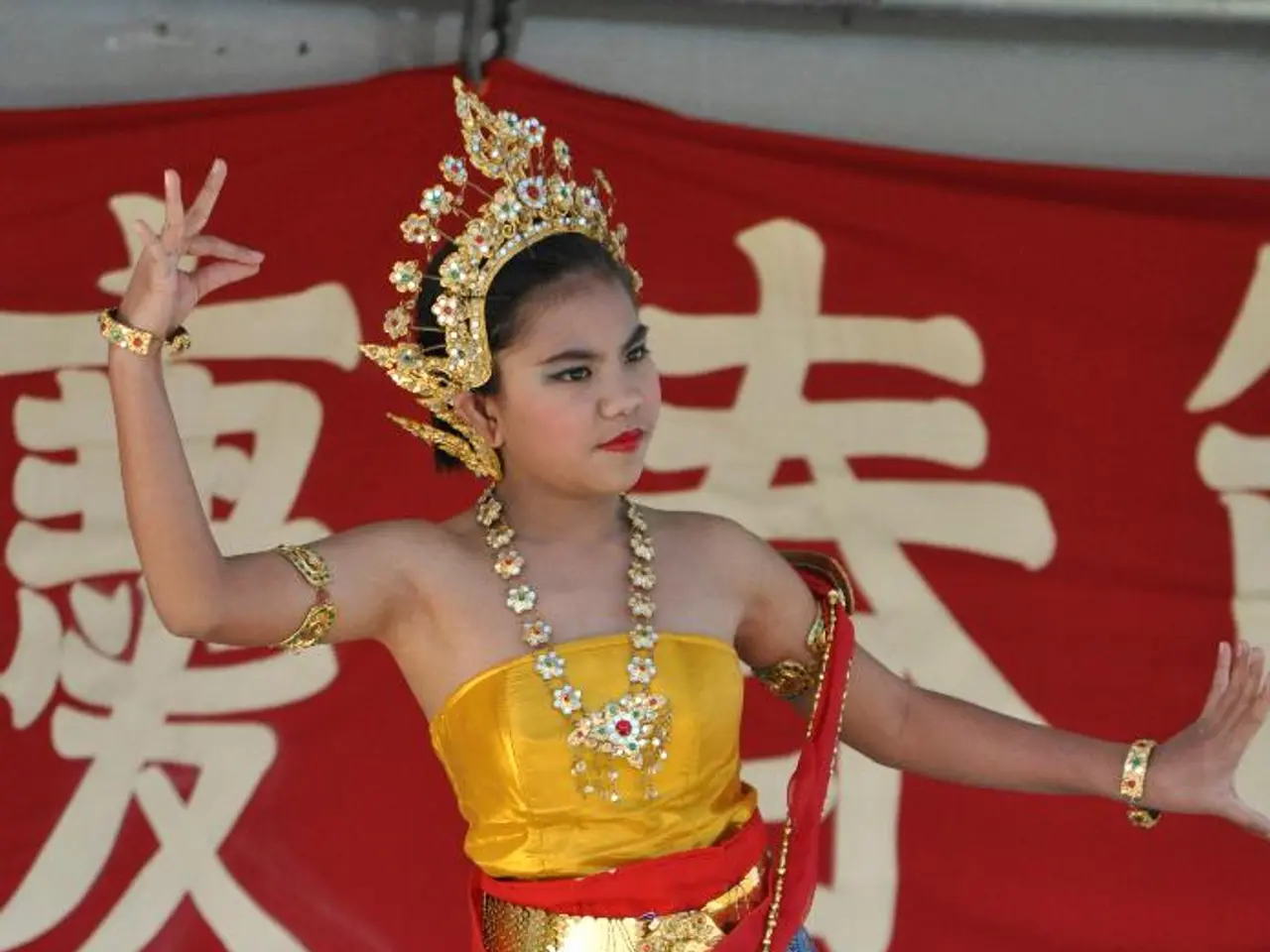The Code of the Colorful Handkerchief in LGBTQIA+ Society: An Explanation
=====================================================================
The Handkerchief Code, or Hanky Code, is an iconic part of queer culture that originated in the 1970s. This covert signal system for sexual preferences and roles evolved as a response to societal repression, allowing safe communication within the LGBTQ+ community.
The code uses bandanas with different colours and positions indicating specific preferences. For instance, a navy blue bandana in the left pocket signals that a person is a top, or likes to penetrate during sex, while the same colour in the right pocket indicates that someone is a bottom, or likes to be penetrated.
Orange in the left pocket indicates someone actively looking for sex as soon as possible, while in the right pocket it indicates looking for something later. Gray in the left pocket indicates someone who ties, and in the right pocket someone who is tied in bondage. White in either pocket usually indicates someone who is safe-sex conscious and may want something other than penetration. Light blue in the left pocket signifies oral sex as a receiver, and in the right pocket it indicates oral sex as a giver.
The Handkerchief Code has roots in traditions from San Francisco's social functions where men danced with each other. It gained prominence in the '70s-era San Francisco cruising communities, likely starting in leather fetish and cruising communities. The practice of using hankies to signal desires may have been suggested by a reporter for the queer publication The Village Voice.
Although the code's prominence peaked in the late 20th century, it remains a symbol of queer history and has seen revivals in various forms as part of LGBTQ+ cultural expression. Hanky code isn't exclusive to gay men and can be used by people of every stripe in the LGBTQ+ community. Non-LGBTQ+ people may also use it in certain fetish communities, but should be aware of the history and meaning of the code before doing so.
This evolution reflects both the creativity and resilience of LGBTQ+ individuals in cultivating identity and connection under restrictive social conditions. The Handkerchief Code represents continuity with older queer cultural practices of coded signaling, including aspects of cross-dressing and secret symbolism.
The Handkerchief Code is a fascinating aspect of queer history, offering a glimpse into the past and the ingenuity of the LGBTQ+ community in navigating challenging social conditions.
Sources:
- Queer Codes: A History of Signals, Symbols, and Secret Languages
- The Hanky Code: A History
- The Hanky Code: A Comprehensive Guide
- The Hanky Code: A Secret Language for the Gay Community
- The Hanky Code: A Modern Take
This article has been fact-checked to ensure the accuracy of any cited facts and the authority of its sources.
Author: Luke Smith, Staff Writer at [website name], MFA from the University of Montana.
In the realm of health-and-wellness, understanding the historical significance of the Handkerchief Code can contribute to a more inclusive perspective on sexual health within the LGBTQ+ community. Furthermore, the Handkerchief Code, a symbol of queer history, can also extend its lessons to broader topics such as lifestyle, fashion-and-beauty, as it showcases the creative solutions developed by marginalized groups in response to societal restrictions.




